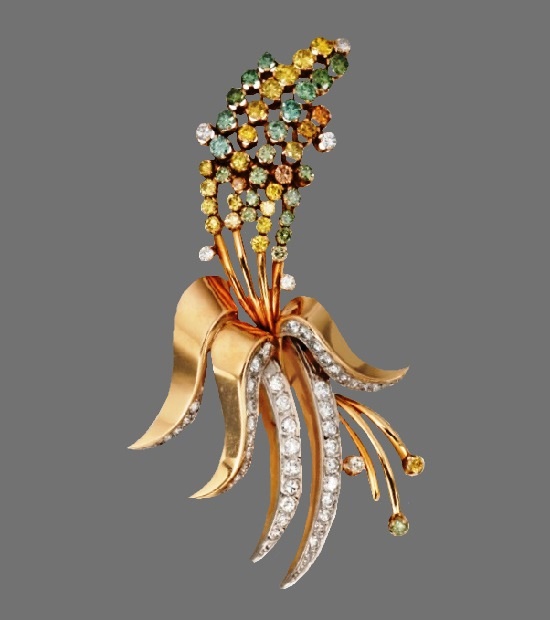American jewelry designer Paul Flato
American jewelry designer Paul Flato
The life of the famous American jeweler of the 1930s-1940s, Paul Flato is worth writing a book or making a film. It had everything – ups and downs, stunning success and imprisonment. But he, like a Phoenix bird, again and again returned to his favorite work. Married three times, he was familiar with many famous people of that time, but in difficult times was left without the support of family and friends.
Born into a wealthy German family in Texas, from childhood he was fascinated by the jewelry of his mother and other women who visited their house. In 1920 he moved to New York, dropping out of his studies at the Austin University and losing the support of his family.
He began working as an assistant at jeweler and watch dealer Edmund Frisch. After a while, he opened his own store on nearby 57th Street. In March 1941, he founded two trademarks, Paul Flato and Flato (with a claim to be used since October 1924) for silver, gold and platinum jewelry.
His business began with gifts to fellow students, as well as the sale of natural pearl strands and large diamonds. Gradually, he got acquaintances with famous and influential people, who soon became his clients and friends. Also, he traveled a lot around the world.
American jewelry designer Paul Flato

Aquamarine belt necklace with ruby buckles, designed by Fulco di Verdura for Flato in 1935, commissioned by the composer Cole Porter for his wife Linda Porter
Noteworthy, Flato’s designers, in addition to himself, were Adolphe Klety, who created flowers and jewelry made of platinum and diamonds. Also, George Headley, renowned for making jewelry and accessories in gold; Fulco di Verdura and others. Besides, his clients participated in the development of the design. In particular, two celebrities of the time, Millicent Rogers and Josephine Ogden Forrestal. Based on sketches by Millicent Rogers, socialite and fashion icon, heiress of Standard Oil, Flato designed the Fat Hearts brooch series.
When Flato began having hearing problems, he created “sign language” clips and brooches, soon featured in Vogue magazine. Later he developed a whole series of gold paired brooches “In Sign Language”.
In March 1938, Flato opened his boutique on Sunset Boulevard in Los Angeles. Flato’s Hollywood career began with the 1938 film Holiday, starring Katharine Hepburn and Cary Grant. At the request of film director he designed jewelry for the film. He also designed decorations for other movies with Hollywood stars, such as Virginia Bruce, Greta Garbo, Merp Oberon, Rita Hayworth and Marlene Dietrich.
Later in 1943, Paul Flato was arrested for theft and fraudulent jewelry to suppliers and customers and declared bankrupt. He returned from Mexico to Texas, where at the age of 70 he opened his own store after a second imprisonment. Flato died in 1999 in his homeland in Texas at the age of 90.









































